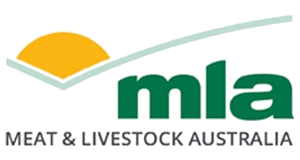Review of Biogas Cleaning
| Project start date: | 01 January 2012 |
| Project end date: | 06 June 2012 |
| Publication date: | 01 June 2012 |
| Project status: | Completed |
| Livestock species: | Sheep, Goat, Lamb, Grassfed cattle, Grainfed cattle |
| Relevant regions: | National |
Summary
Anaerobic treatment of wastewater from Australian red meat processing plants produces significant volumes of biogas containing methane, which can be captured and used for onsite energy generation.
The three most common uses of recovered biogas typically include:
- consumption as energy-rich boiler fuel
- co-generation using a reciprocating gas engine or microturbine to generate electricity and hot water
- flaring in a purpose-built flare.
This study outlines the common uses of biogas and explores the adverse impacts of various biogas constituents. Management of water condensate in biogas was reviewed, as well as technologies commonly implemented.
Objectives
The main objectives of this project were to:
- provide technical and economic information to the red meat processing industry, and its advisors, identifying the need for biogas cleaning
- outline the technologies best suited for cleaning biogas produced in covered anaerobic lagoons.
Key findings
- Several hydrogen sulphide removal technologies were identified, outlined and evaluated in terms of suitability, operability and cost. These include:
- sodium hydroxide scrubbing
- water scrubbing
- biological treatment
- adsorption onto iron containing media.
- Hydrogen sulphide and water were identified as component of biogas which need to be considered when using biogas for certain applications.
- The biogas quality requirements are typically stipulated in an equipment supplier’s “Technical Reference” document or similar, and the quality requirements will often form part of the conditions of the warranty and performance guarantees.
Benefits to industry
Biogas mainly consists of methane and carbon dioxide but also contains a number of other constituents, such as hydrogen sulphide and water, which can have adverse impacts on combustion, storage and handling equipment.
MLA action
AMPC and MLA have funded research into the common uses of biogas, the adverse impacts of various biogas constituents, as well as various impurities management and removal options.
MLA continues to invest in development of waste to energy technologies.
More information
| Contact email: | reports@mla.com.au |
| Primary researcher: | GHD Pty Ltd |


